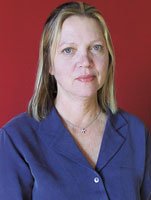PAD Jumps the Learning Curve
CAD/CAM provider PAD System Technologies Inc. is learning that education can lead to a profitable path for technology companies and their customers.
The Montreal company, which has its North American headquarters in the California Market Center in Los Angeles, has launched an education initiative. PAD is bringing more installations of its CAD technology to Southern California’s fashion colleges and trade schools. In addition, the company is hosting regular seminars and classes on both coasts, as well as an allday training fair this spring in the CMC’s fashion theater.
“Education is the key to unlocking the sleeping giant within this company and this industry,” said Kristine Gloviak, PAD’s vice president of sales and marketing. Gloviak thinks better education will keep more jobs in the United States. At the same time, education can boost sales and unleash technology’s potential, she added.
But the age-old challenge in the fashion world has been the industry’s resistance to change. Gloviak and others said they still see a lot of old-school patternmakers and designers using antiquated systems or manual methods and thinking, “We’ve gotten by this long, so why change?” Gloviak said she especially sees this in New York.
But even old-timers are starting to change their ways. Gloviak is teaching computer-aided design to 70-year-olds now, as well as to newcomers. PAD is running twice-a-week classes in the Big Apple and Thursday classes at the CMC in Los Angeles.
Overcoming the intimidation many feel when it comes to learning new technology is one of the first challenges for educators, said Gloviak, who thinks user-friendly products are key. CAD products increasingly employ easyto- use icon-based systems, she said. PAD has invested in 3-D draping technology to help its users speed up the sample-making process and give designers a better visual basis.
The next generation of fashionistas appears to be grasping technology more quickly than the past generation. One example of this can be seen at the New York studio of designer Narciso Rodriguez. The rising star designer, whose studio is decked out with the latest Apple hardware, uses design software from the ground up. His setup impressed Apple so much that the company produced a minidocumentary on his operation.
Using software on a big scale in the design process is almost unprecedented for runway designers, Gloviak said. But it’s a strong indicator of where the industry is heading.
PAD will install its CAD packages at Los Angeles Trade-Technical College’s new Macintosh lab this fall and has more than 70 stations at the Art Institute’s California Design College campus in Los Angeles. The company has programs at the Fashion Institute of Technology in New York, as well as at other top fashion campuses. For more information on classes, visit www.padsystem.com.
ApparelMagic Launches E-Commerce Program
Glendale, Calif.–based ApparelMagic Inc. has updated its enterprise resource planning software suite to include a Web-based infrastructure. The new version allows users to conduct e-commerce activities such as online order taking and show their lines over the Internet via virtual showrooms and fashion shows.
The system can be summed up in four words, said company principal John Murphy: “Reach, connect, sell, manage. Whatever it takes to source your products and sell them online, including an image consultant for your Web site.”
Murphy said apparel companies often separate their marketing and production needs when thinking about Internet technology but that is changing with new advancements in software writing.
The company’s new release allows users to develop styles, specs and cost sheets in ApparelMagic and market products online with Web showrooms. Then, users can take orders and track shipping, production, purchasing and inventory. The final step involves managing financial health with an integrated accounting and analysis tool.
The online showrooms are more than just online line sheets, Murphy said.
“It’s just like a physical showroom, only it’s on the Web,” he noted. “And, just like in a physical showroom, a client can browse, place orders and transact business.”
The Web showrooms employ streaming video and Macromedia Flash technology to maximize quality, Murphy said. Other new features include tools such as group calendars, task management systems, barcode inventory and secure credit card processing.
“We’ve listened to concerns from the apparel industry,” Murphy said. “They say, ’Yes, we have an online store, but it doesn’t talk to our production system,’ or ’Yes, we have a great ERP system, but our customers and salespeople can’t place and manage orders on the Web.’”
ApparelMagic has a variety of software packages starting at under $5,000. Visit apparelmagic.com for more information.
Avery Debuts New Label Printers
The Avery Dennison Corp. has rolled out two new printers designed for two-sided labels.
The CareLabel AP 2/1 prints two colors on top and one color on the bottom of the labels. The CareLabel AP 1/1 prints one color on each side. Both systems print on stock up to 4 inches wide to meet most care-labeling applications. The units can print at 5 inches per second and can produce up to 36,000 2-inch-by-4-inch permanent care labels per day.
Users can equip the systems with a sonic cutter/stacker to cut and stack soft care-label materials, including materials like satin.
Avery Marketing Director Mark Hansinger said the machines should be able to cut costs for apparel manufacturers, especially those that employ separate printing and cutting/stacking processes.
In addition to the printers, Avery has also released the TH-1500 Heat Seal Printer/ Bonder for care-label bonding and shoetongue labeling























